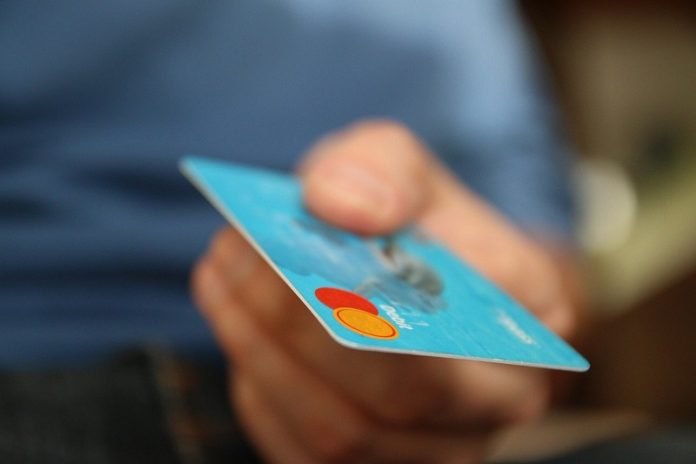
With a cost of the living crisis on the horizon, what does this mean for Buy Now, Pay Later?
Most of us will know the feeling of gazing longingly at the current sartorial object of our desire (close your eyes, and you can probably think of an example) while knowing we don’t actually have the funds for it.
It used to be the case that you’d have to wait till you received your pay cheque to get that sweet shopping dopamine hit.
But when modern Buy Now, Pay Later (BNPL) fintech companies exploded onto the market, shoppers no longer had to wait.
With companies such as Swedish Klarna, Australian Afterpay, Zip Co, and the US-based Affirm, they could make the purchase straight away.
How do they work? BNPL companies offer consumers the chance to receive the goods before they have made payment.
Afterward, they make payments in (often interest-free) repayments – one of many benefits that encourage customers to use their services.
“BNPL is also attractive to consumers as it claims to have no interest charges,” explains Associate Professor Rob Nicholls, an expert in the financial services sector and regulatory space. “This is in contrast to credit cards which can incur interest at about 20 percent.”
Dr. Natalie Oh, UNSW Business School has expertise in financial education, and has worked in the space of personal debt and decision making.
She says that BNPL can seem like a good idea for consumers wanting to better manage their cashflows (for example if you want to match cash inflow with outflow).
“As well as offering interest-free purchases, there is a potential for discounts, coupons, and other rewards provided by BNPL providers.”
But as anxieties rise around the cost of living, should there be concern around the relatively unregulated space? What should consumers be aware of? And what impact would regulation have on these booming companies?
A/Prof. Nicholls and Dr. Oh explain.
Is Buy Now, Pay Later a good idea?
A/Prof. Nicholls: Buy Now, Pay Later or BNPL products were first introduced at a time of very low-interest rates. It provides a way in which customers can manage cash flow over a short period (usually eight weeks). For people that are paid fortnightly, this means that the expenditure can be matched to income.
BNPL is really a replacement for the peculiarly Australian ‘layaway’ or ‘layby’ where goods are received when the money is paid over time. The difference is that the goods are obtained before all of the payments are made.
What are the disadvantages of Buy Now, Pay Later?
A/Prof. Nicholls: BNPL is a great system for people who can manage their money well and who understand that multiple BNPL commitments will mean large repayments. The problem is that BNPL is not always seen as another source of credit.
In 2020, the Australian Securities and Investments Commission (ASIC) found that 20 percent of BNPL customers missed payments. Typically, the BNPL provider charges a fee for missed payments. The effect is that a person who misses a payment can start to incur high levels of charges.
Some BNPL providers also charge a monthly fee for access to the service. This can be a significant proportion of the payments made if the customer only uses Buy Now, Pay Later products for low-cost goods and services.
Dr Oh: Disadvantages to BNPL also include the potential to overspend. If you’re late on payment this incurs fees, and payment defaults can leave a mark on credit history. This means that more important purchases like a car or home could be at a risk or you may need to pay a higher rate.
How do BNPL companies make money?
A/Prof. Nicholls: The primary source of revenue for BNPL operators is a fee charged to the merchant (the seller of the goods or services).
This can be much higher than the equivalent merchant fee for credit cards (up to 6 percent as opposed to up to 2 percent).
Different providers also have charges including Account Keeping Fees, Establishment Fees, and the Late Payment Fee. Some BNPL operators cap their Late Payment Fees. For the larger BNPL operators, these fees are disclosed to the Australian Finance Industry Association.
With the cost of living going up, do you think consumers are more likely to turn to BNPL companies?
A/Prof. Nicholls: As inflation rises and interest rates go up in the wake of the pandemic, BNPL looks more attractive as there is no interest fee to pay.
However, the same problems of money management still exist. There is a far greater risk of getting into debt by deciding that food or energy bills should be deferred.
Retailers like Woolworths offer their customers the ability to select PayPal at the checkout and choose the service’s Pay in 4 option.
PayPal’s Pay in 4 payment method works similarly to other BNPL services by splitting the total cost of purchase into four separate payments due every two weeks. This represents a real risk of getting into unmanaged debt.
Dr Oh: Consumers are more likely to turn to BNPL, as consumers need an alternative credit line. Consumer sentiment of not paying interest on purchases is attractive and there is a tendency for consumers to be overconfident that they can pay on time to avoid late fees, which is not always the case.
Further, according to the ASIC report, in the 2018–19 financial year, missed payment fee revenue for all Buy Now, Pay Later providers totaled over $A43 million, a growth of 38 percent compared to the previous financial year. This clearly illustrates that more and more customers fall into the trap of being overconfident that they can pay on time – but the statistics tell you otherwise.
Another reason? No credit check. This is not necessary with all BNPL service providers, which is another reason that consumers are more likely to turn to BNPL with the cost of living crisis.
Commentators think rising interest rates and increased regulations could be an issue for BNPL companies. Why is this?
A/Prof. Nicholls: The current Reserve Bank of Australia (RBA) policy is to increase interest rates in order to control inflation and bring it back into the target 2 to 3 percent range. The effect of this is to increase interest rates on mortgages and most other forms of credit.
It would not be consistent for the RBA to be looking to control inflation and have the ‘interest rate pain’ deferred using BNPL. The RBA takes the view that there are enough savings to mean that controlling inflation will not lead to a recession.
BNPL does not fit well into this approach. It means there is a high likelihood of further regulatory intervention in the BNPL space. There is also an issue for BNPL operators that the BNPL model was based on very low-interest rates. The merchant fees and consumer charges were all designed in that low-interest rate environment. So, it is likely that BNPL operators will need to consider whether their existing model will work in an environment of higher interest rates.
Dr Oh: There is an ongoing debate on whether BNPL should be regulated under credit laws, and whether there is enough consumer protection for those using BNPL and other innovative financial products that are on the market.
Let me put this into a perspective.
The majority of BNPL users are millennials who use BNPL as a source of short-term funding. Eighteen to thirty-four year-olds comprise 61 percent of BNPL users, with 18–24 year-olds making up 23 percent overall. According to the Household, Income and Labour Dynamics in Australia (HILDA) survey, those aged 15-24 years have the lowest financial literacy rate.
This fuels the debate on whether there is adequate consumer protection in the BNPL space, especially for young people and those that are financially vulnerable.
To increase consumer protection around new financial innovations such as BNPL, there needs to be an increased financial literacy rate.
I believe education is key to consumer protection, whether there is a law or not – something which is in line with the National Strategy Financial Capability 2022. This is particularly true for vulnerable groups such as young Australians, women, people in or nearing retirement, and Aboriginal and Torres Strait Islander peoples.
What does the rising cost of living mean for levels of personal debt?
Dr. Oh: Rising cost of living means more potential to accumulate debt. To keep up with rising prices one needs to either increase income or find an alternative funding source, that is, accumulate debt.
Although the current unemployment in Australia is at the lowest rate in decades, real wages and salaries are not keeping up with the inflation. This means households need to find an alternative funding source to manage the gap using a debt arrangement such as BNPL.
The 2020 ASIC report suggested that 43 percent of users with a BNPL arrangement have taken out additional loans to meet their BNPL obligations. This will be the likely trend going forward to keep up with debt payments which means a snowball effect in the personal debt space.
What should you know before taking on BNPL debt?
Dr. Oh: Remember the following things before you sign up to BNPL:
- It’s easy to overspend. You can over-commit to spending what you can’t afford.
- Fees add up. You are charged to use the service. Know the fees involved.
- BNPL can be hard to manage. If you sign up for more than one BNPL service, it can be hard to keep track of payments.
- BNPL might affect a loan application. Lenders consider Buy Now, Pay Later spending when you apply for a car loan or mortgage.
- Late repayments can appear on your credit report. This affects your ability to borrow money in the future.
Written by Kate Bettes.




